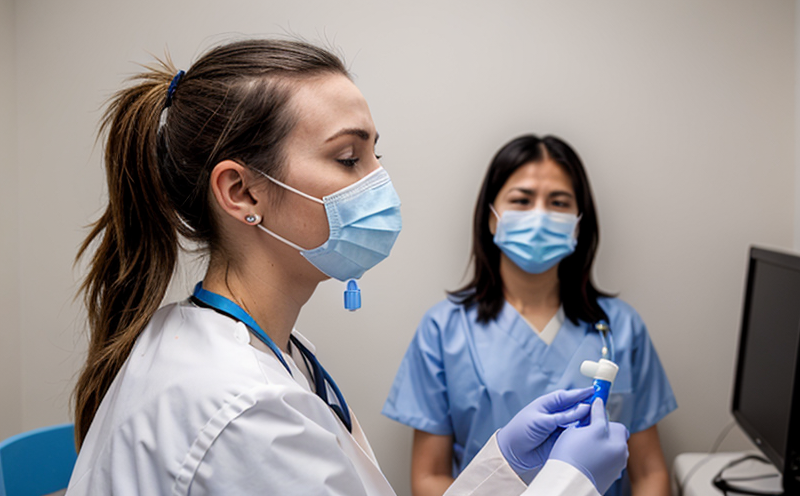Mannheimia haemolytica Respiratory Testing in Cattle
In the agricultural sector, respiratory diseases in cattle can have a significant impact on herd health and productivity. The bacterium Mannheimia haemolytica is one of the primary culprits responsible for causing pneumonia, pleurisy, and other respiratory issues in cattle. Detecting this pathogen early through reliable testing ensures prompt treatment and prevents further spread within a herd.
The Mannheimia haemolytica Respiratory Testing service we offer focuses on identifying the presence of this bacterium using advanced diagnostic techniques. This test is particularly crucial for maintaining animal health, optimizing farm management practices, and ensuring compliance with regulatory standards. By detecting M. haemolytica early, farmers can implement targeted treatments, thereby minimizing economic losses associated with prolonged illness or death.
The testing process involves collecting samples from affected animals and analyzing them using culture-based methods as well as molecular techniques like PCR (Polymerase Chain Reaction). Culture media specifically designed for the growth of M. haemolytica are used to isolate the organism, followed by biochemical tests to confirm its identity. Alternatively, real-time PCR assays targeting specific genes within the bacterium provide rapid results.
Our laboratory adheres strictly to international standards such as ISO 17025 for proficiency in our testing procedures. This ensures that all samples are handled accurately and consistently across different batches. The turnaround time from sample receipt until final report generation is typically two business days, allowing prompt communication of results back to veterinarians or farm managers.
The importance of this service extends beyond just identifying the pathogen; it also plays a key role in understanding disease prevalence within herds and informing vaccination strategies. By regularly monitoring for M. haemolytica, farmers can better plan preventive measures aimed at reducing outbreaks during peak periods when environmental stressors are highest.
Furthermore, this testing service supports broader public health goals by contributing to surveillance efforts that track the emergence of antimicrobial resistance among zoonotic pathogens like M. haemolytica. Understanding how these bacteria evolve over time helps guide appropriate therapeutic interventions and promotes responsible use of antibiotics in veterinary medicine.
Scope and Methodology
- Samples Collected: Nasal swabs, bronchoalveolar lavage fluids from clinically affected animals.
- Analytical Methods: Culture-based methods (using selective media), biochemical identification tests, PCR for rapid detection.
The Mannheimia haemolytica Respiratory Testing service encompasses a comprehensive approach to diagnosing respiratory issues in cattle caused by this bacterium. Our scope includes not only the technical aspects of sample collection and analysis but also providing consultation on best practices for managing affected animals post-diagnosis.
Our methodology ensures that each step from initial contact with the farm until delivery of the final report adheres to stringent quality control measures. This commitment translates into accurate diagnoses which are essential for making informed decisions about treatment protocols and herd management strategies.
Benefits
- Avoidance of Economic Loss: Early detection leads to quicker intervention, reducing the duration of illness and associated costs.
- Promotion of Animal Welfare: Prompt treatment can prevent suffering among affected animals, enhancing overall well-being within the herd.
- Support for Regulatory Compliance: Our rigorous adherence to international standards ensures that all tests meet necessary requirements set forth by regulatory bodies.
The benefits of employing our Mannheimia haemolytica Respiratory Testing service extend far beyond mere diagnosis; they encompass improvements in both经济效益





